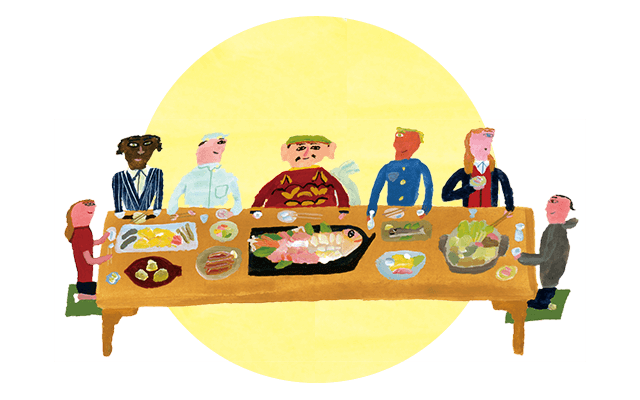
Harima Archives
2022.03.18 The Arrival of Hishio
の伝来.jpeg)
Arriving from Asia
The start of hishio, which is the root of fermentation, goes back to the Nara and Heian periods. The government at the time, which had developed a political regime through the ritsuryo system, dispatched missions to the Tang dynasty in China, which had the most advanced culture in the Asian continent. The envoys brought back Tang culture and institutions, technologies, art, and new culture related to food, clothing, and shelter. There were 15 types of food brought back by the envoys. These included natto and sesame oil, familiar with Japanese cuisine, and karabishio (Tang hishio). This was the source of hishio that contributed significantly to the development of Japanese food culture.
Hishio-making Which Started in China
Hishio-making started in China about 3,000 years ago during the Zhou dynasty. In the ancient ritual text of Zhouli, there is a record of “120 pots of hishio” for a banquet. The ingredients of hishio at the time were meat, which was called shishibishio. During the Northern Wei dynasty (532–549), soybeans started being used. This hishio was brought back by the missions and later spread throughout Japan.
Hishio Changed Forms in Japan
According to the Taiho Code, after the arrival of karabishio, a facility called Hishiotsukasa was established in the banquet meal kitchen of the Ministry of the Imperial Household, and hishio-making started. The Shosoin treasure house in Nara during the Tempyo period (730–748) has records of sho, miso, kasubishio, mamebishio, shinsakushio, and arashio being made. In particular, shinsakushio, made using the brewing method for karabishio, was considered the highest grade of hishio.
Later, Wamyouruijusho, published in 935, explains about sho that “its Japanese name is hishio and separate from this is karabishio and mamebishio.” In other words, karabishio, which arrived from China, was made from soybeans, and wheat was used as an ingredient for hishio. Moreover, komabishio, which came from the Korean Peninsula, is recorded as miso here (not the same as Japanese miso). Both karabishio and komabishio were brewed in a way that suited Japan’s climate and grew to be unique seasonings.
The Birth of Soy Sauce
The liquid pressed from hishio in a moromi-form is the start of soy sauce in Japan. The first time soy sauce appeared in literature was in Engishiki, published in 927. Later, court noble Yamashina Tokitsugu, who served Emperor Gonara during the Muromachi period, wrote that on August 27, 1558, he sent a small tub of soy sauce to a lady-in-waiting, Nagahashi no Tsubone. There are recipes using soy sauce from ancient times. The Okusa clan, who were the chefs of the Muromachi shoguns, recorded them in Okusake Ryorisho, written during the Onin and Kiecho periods (1467–1614).



